Selling on Amazon is an exciting prospect for anyone looking to diversify their income stream.
For starters, you have the ability to launch and grow a business on one of the biggest e-commerce platforms. One where customers complete 50% of their purchases in less than 15 minutes.
Talk about securing sales in record time.
As with any entrepreneurial endeavor, becoming an Amazon seller doesn’t come without its costs. You must account for product and Amazon FBA fees, as well as other investments required to get started.
Not to worry, though. We’ll break down all the expenses associated with selling on Amazon and provide tips on how you can minimize your costs.
How Much Money Do You Need to Start Selling on Amazon?
The answer is, it depends. Your business goals and financial situation will ultimately dictate how much initial capital you’ll need. For reference, we found that new sellers typically spend between $2,500–$5,000 to get their Amazon businesses up and running.
But again—there isn’t a definitive minimum required investment for Amazon. Some sellers have gotten their start with just $500 or less while others have put in $10,000 or more.
In the following sections, we’ll break down which expenses to factor into your budget as you navigate Amazon’s vast marketplace.
Essential Amazon Business Start-up Costs
Investments for launching your e-commerce business can be divided into two categories—the nice-to-haves and the must-haves. Let’s take a look at what the latter entails.
Product Samples
To truly answer the question, “How much money does it cost to sell on Amazon?”, we must consider the expenses incurred before product launch. This includes product sampling, a necessary step for ensuring the quality of items before you sell. Depending on the product, the cost of your samples will vary. We suggest choosing your top three suppliers and ordering from them at ~$100 per sample. This should help lower your expenses.
Inventory
Like the product samples, your inventory costs will be determined by your product idea. You can usually secure better deals when purchasing units in larger quantities. For instance, if you buy 500 units at $4 per unit, you would end up paying $2,000 for initial inventory.
Our advice is to negotiate a price for the Minimum Order Quantity (MOQ) that you and the supplier can both agree on. That way, you can keep your expenses down and still maintain healthy profit margins.
Individual vs. Professional Seller Plans
The cost of selling on Amazon also involves choosing one of the two plans:
- Individual: At $0.99 per item sold, this plan is ideal for those still exploring their product options or are selling less than 40 units a month. Once you pin down your offering, you can switch to the Professional selling plan for access to more benefits.
- Professional: Recommended for those selling more than 40 units a month. You’ll have to pay a $39.99 monthly subscription fee, but it offers a lot more tools and services than the Individual plan.
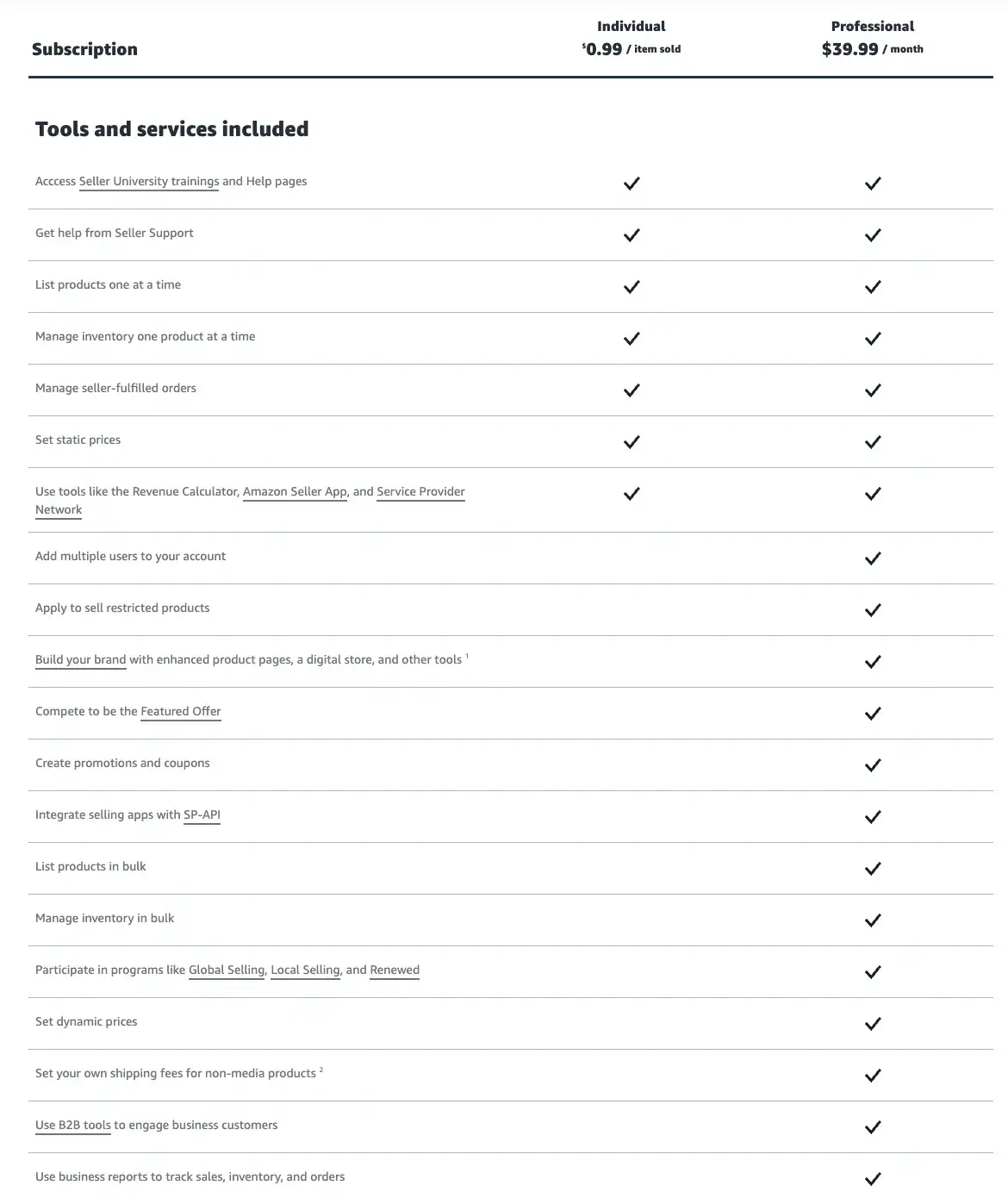
For a more in-depth look at both, be sure to check out our guide on selecting an Amazon seller plan.
Amazon Fulfillment Options
Similar to the seller plans, there are two options to pick from: FBA and FBM.
Fulfillment by Amazon (FBA)
Amazon will handle the storing, packing, and shipping of your products, along with customer service and returns. If you decide to go down this route, be aware of the following costs to start an Amazon FBA business.
- FBA Fulfillment Fees: A per-unit charge for fulfilling customer orders on Amazon. The amount will depend on an item’s category, size, and weight. Large or heavy items tend to accrue higher costs, so keep that in mind when finding products to sell. The good news, however, is that Amazon will be reducing the fulfillment fee rate for standard-sized and large bulky-sized products beginning April 15, 2024. More details on this update can be found in our complete guide to Amazon seller fees.
- Monthly Inventory Storage Fees: Think of this cost as similar to paying rent. In return for a regular payment, Amazon stores your goods in its fulfillment centers. The fees are calculated based on a product’s daily average volume in cubic feet.
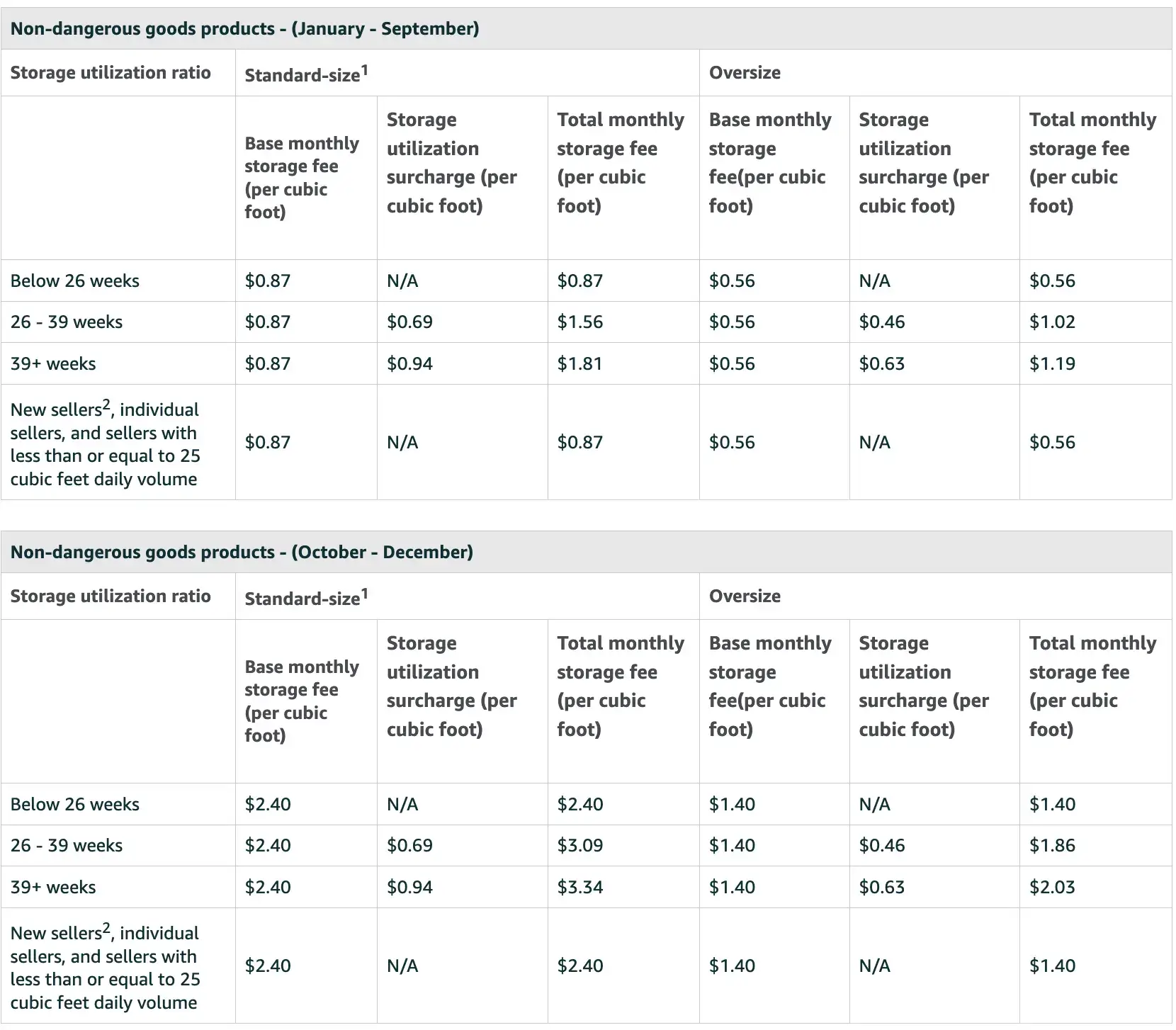
- Long-term Storage Fee: Now known as the aged inventory surcharge, this fee occurs if you have products stored at an Amazon warehouse for longer than 180 days. To prevent this situation from happening, read up on the best practices for Amazon inventory management.
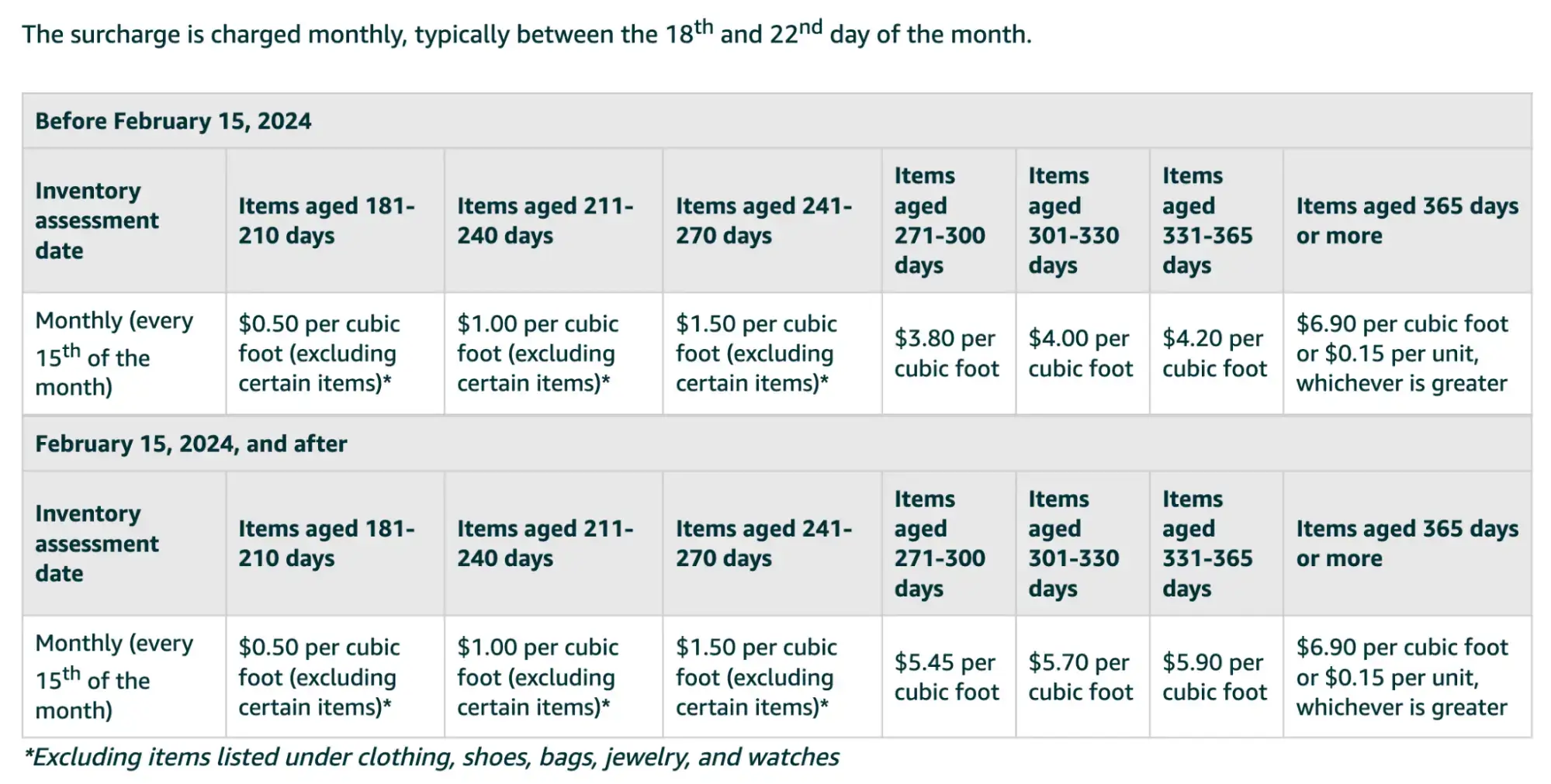
- FBA Disposal Order Fee: This fee kicks in if you want Amazon to get rid of any items in your FBA inventory.
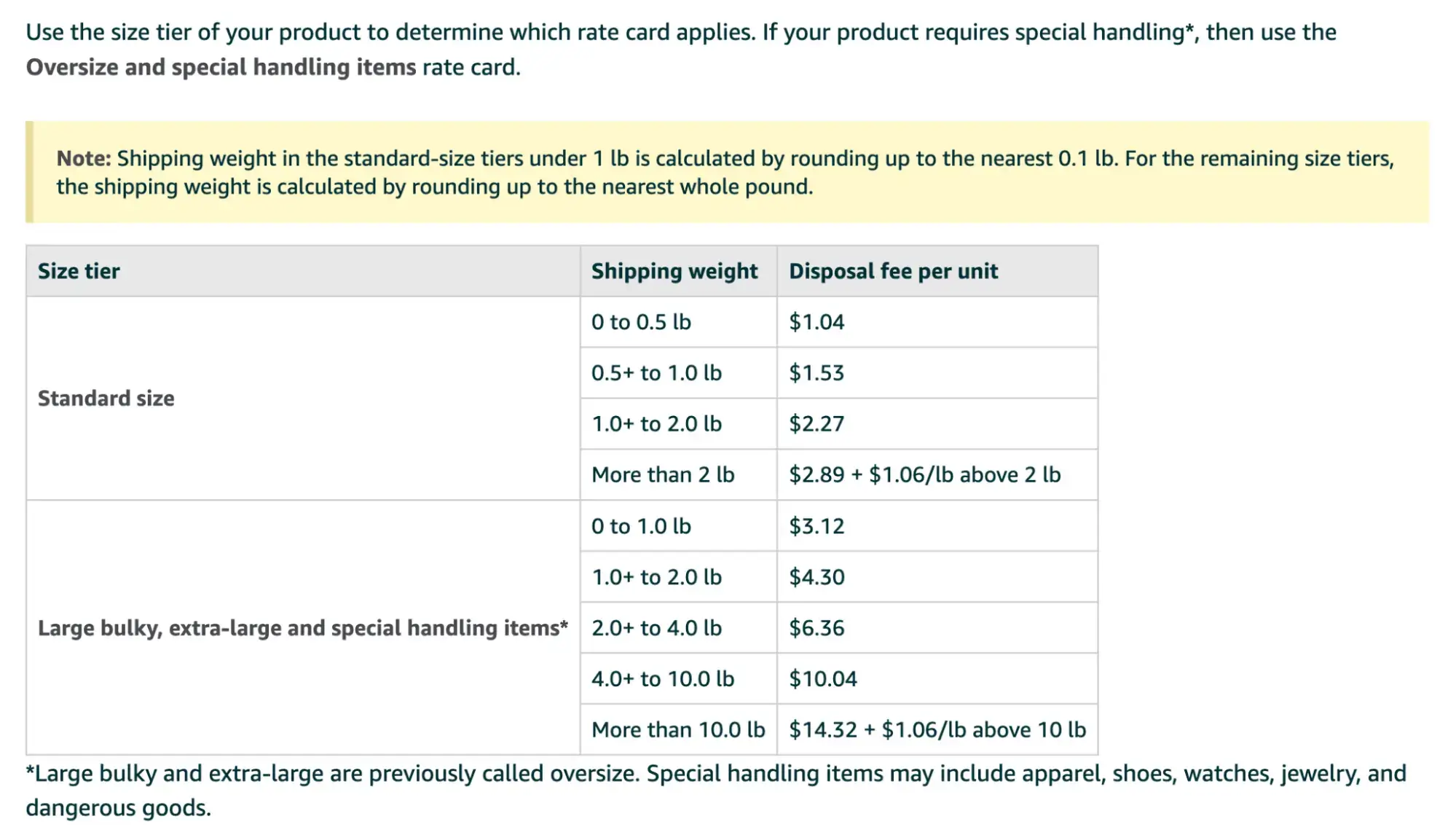
- Returns Processing Fee: You may be subject to this charge starting June 1, 2025 if you sell items (excluding Shoes and Apparel) with return rates above a certain threshold applicable to a specific category. Amazon calculates this number as the percentage of units shipped in a particular month that customers return within that month and the following two calendar months. For example, units shipped in July 2025, the return rate would be the percentage of those items returned in July, August, and September 2025.
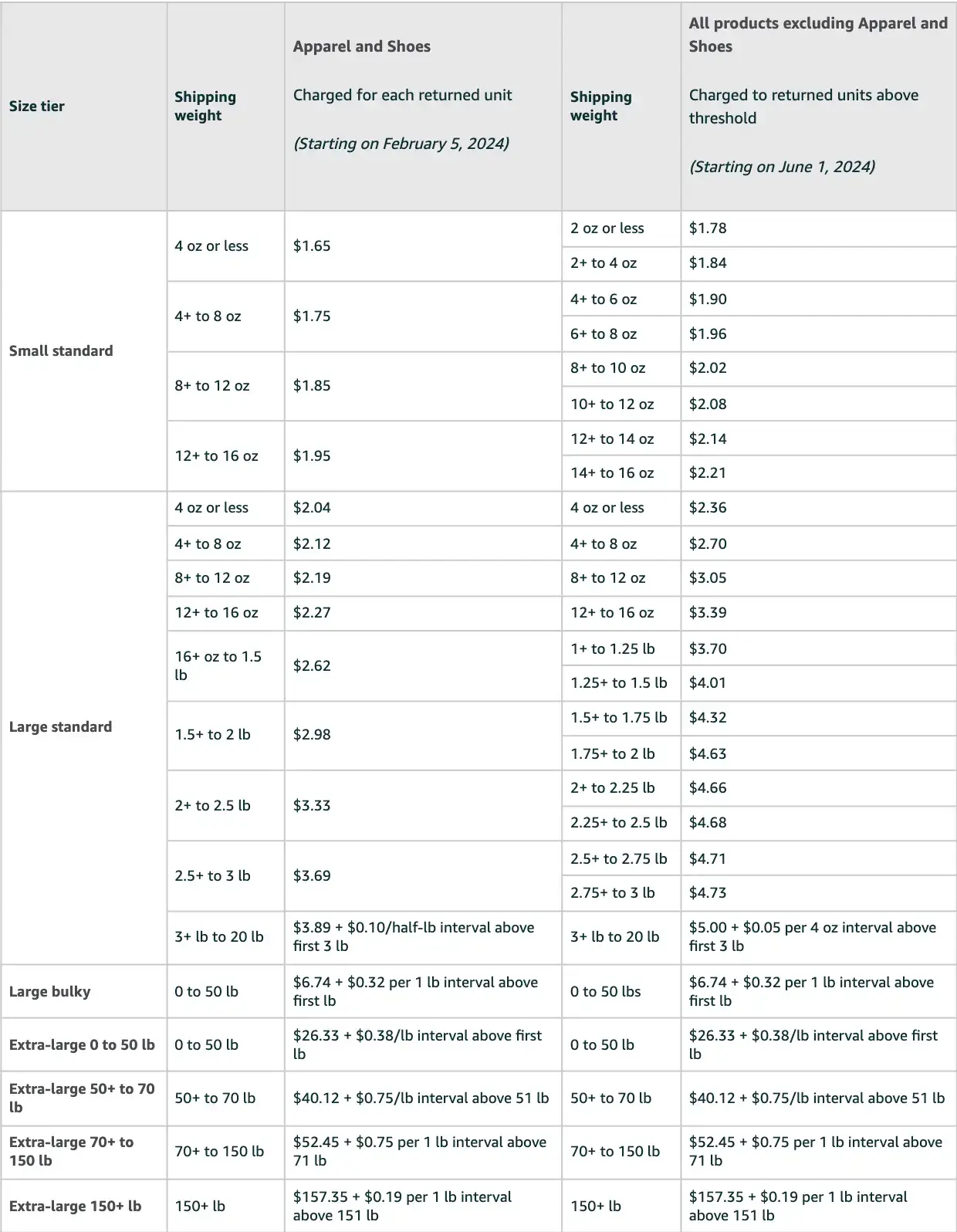
Note: The return rate thresholds for all product categories was published May 1, 2024 and continues to be accurate in 2025.
Based on the list above, it’s clear that the costs can add up quickly. To help you better understand your expenses upfront, try using our free FBA calculator. It will accurately predict your FBA fees and profit potential, so you can make informed decisions and avoid financial surprises.
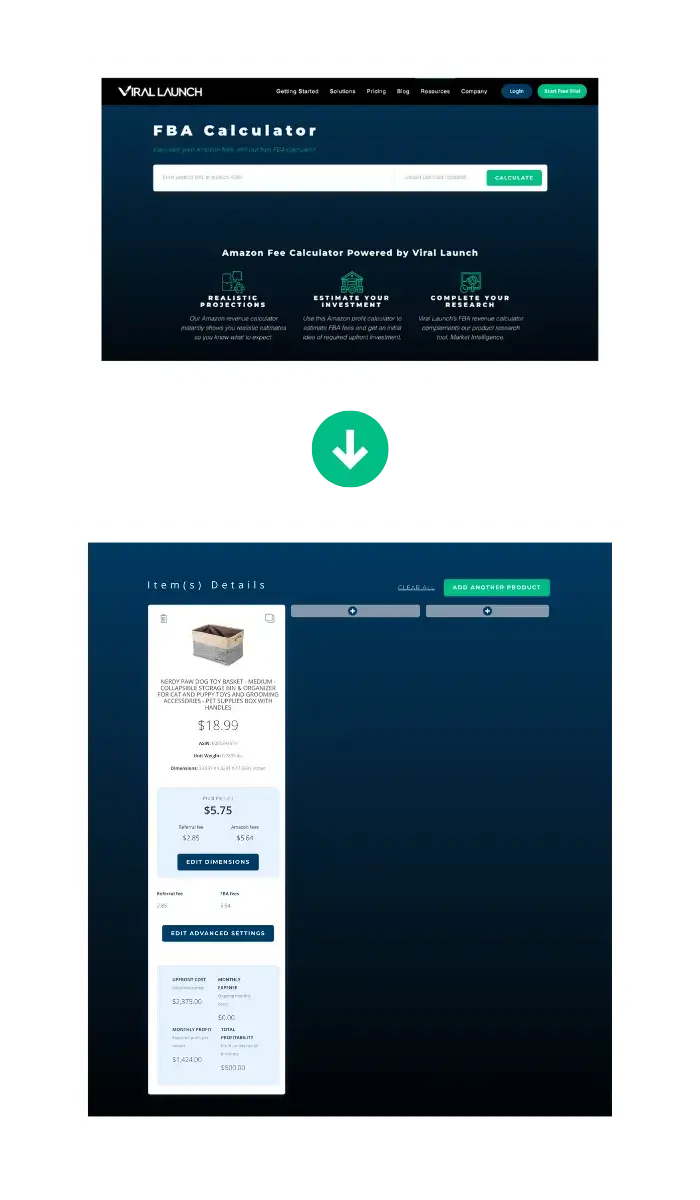
Fulfillment by Merchant (FBM)
This is a more hands-on approach—you are responsible for storing your inventory, fulfilling orders, and providing customer support. Should you go with this fulfillment method, note that the shipping expenses will vary depending on the seller plan you select.
- If you choose the Individual Plan: You are limited to using Amazon’s predetermined shipping rates. The downside to this rule is that the rate may not be enough to cover the actual cost of shipping. In that scenario, you would have to take care of the remaining balance. It’s important to price your items strategically to ensure you’ll earn a profit.
- If you choose the Professional Plan: You can (1) set your own shipping rates, except for products that fall under the Media category and (2) adjust your product prices to account for shipping costs.
Unique Product Code (UPC)
Acquiring a UPC is another Amazon business investment you’ll need to make. The code essentially acts as an identifier for a product listed on Amazon. Without it, you won’t be able to sell anything.
You can get one or multiple UPCs from GS1, the premier provider of barcodes, depending on the number of items you’re selling.
| Number of UPCs Needed | Initial Fee | Annual Renewal Fee |
| 1 | $30 | None |
| 10 | $250 | $50 |
| 100 | $750 | $150 |
| 1,000 | $2,500 | $500 |
Other Amazon Seller Fees to Consider
Unfortunately, the fees to sell on Amazon don’t stop with the essential costs. There are a few others to look out for, which we’ll get into next.
Referral Fees
This fee applies whenever you sell a product, regardless of the Amazon seller plan you’re on. It’s a percentage of the item’s sale price and varies based on the category in which the item is sold. On average, you can expect the Amazon referral rates to range from 8%–15%. But some categories have their exceptions, as seen in the table below.
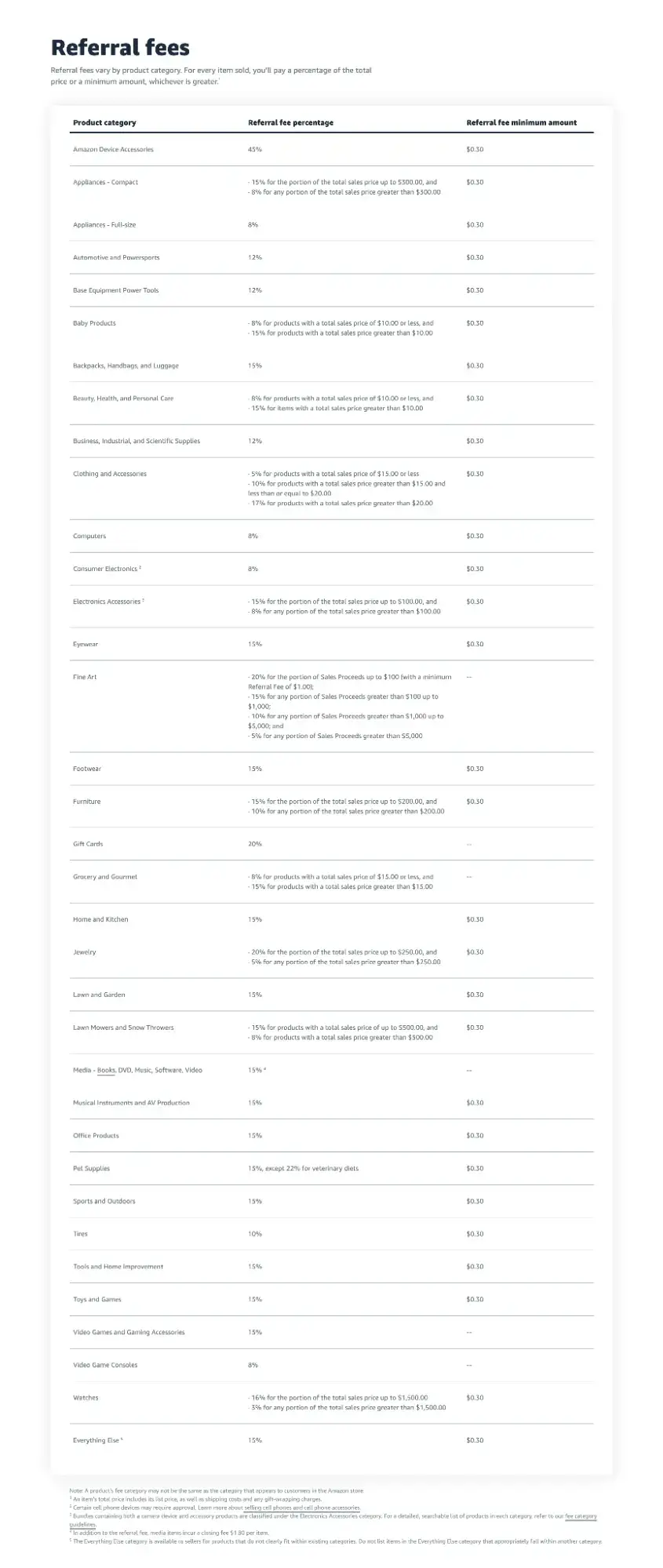
Amazon Closing Fees
Be prepared to shell out an extra $1.80 per product sold if you’re selling in the any of these categories:
- Books
- DVD
- Music
- Software & Computer/Video Games
- Video Game Consoles
- Video Game Accessories categories
Rental Book Service Fee
Sellers who provide textbook rentals on Amazon will incur a service fee of $5.00 per rental.
Refund Administration Fee
Refunding a customer for an order they already paid for? Amazon will reimburse you for the referral fee. However, you will have to pay $5.00 or 20% of the applicable referral fee—whichever is less.
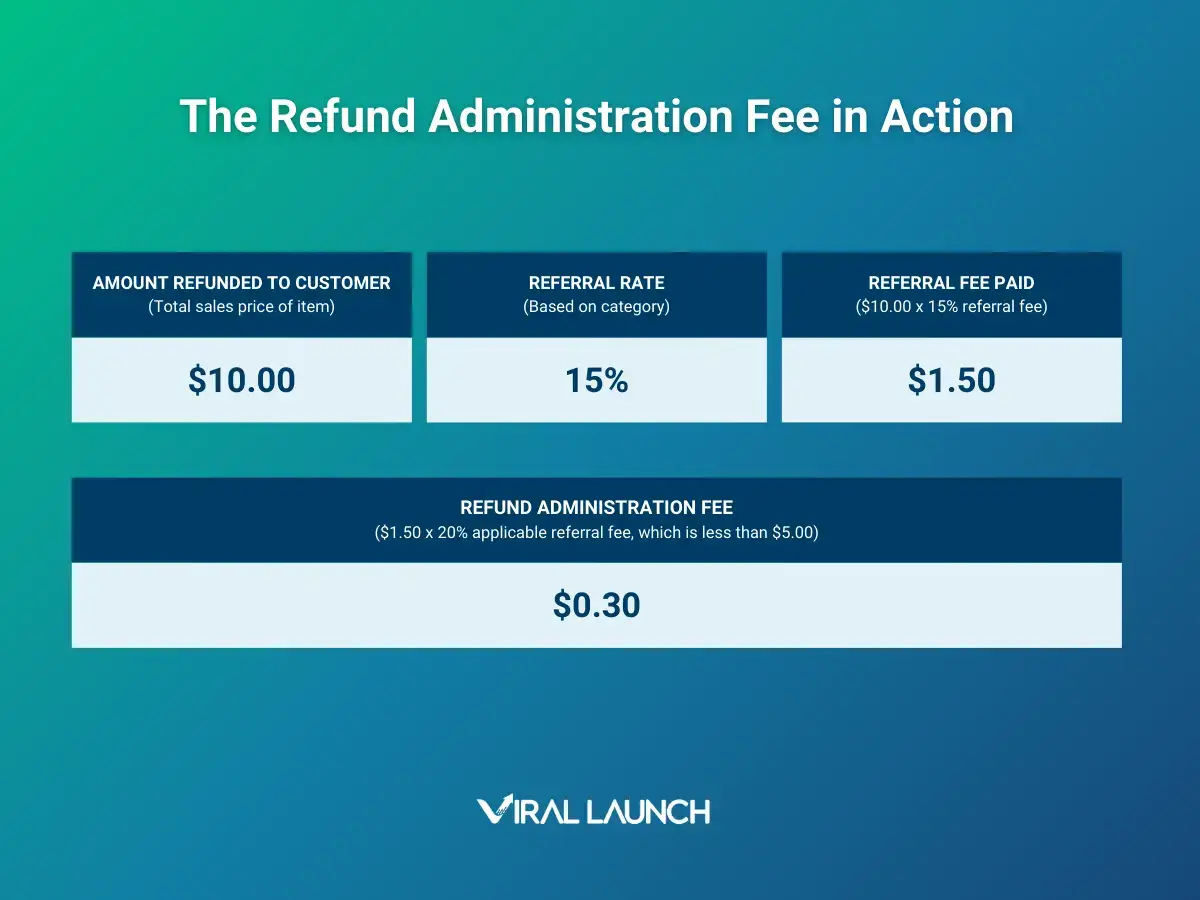
High-volume Listing Fee
If you have more than 100,000 active, non-media listings that haven’t sold in the last 12 months, Amazon will charge you a monthly fee of $0.005 per eligible listing. The e-commerce company’s reasoning behind this expense is to offset cataloging costs.
Additional Costs to Grow Your Amazon Business
In comparison to the required investments and Amazon marketplace fees, these expenses are the nice-to-haves. They are by no means mandatory when starting out, but putting some money toward them can certainly fast track your way to success.
Marketing & Advertising
Listing a product on Amazon can only get you so far when you’re competing against thousands of other sellers in your niche. Fortunately, there’s a solution—Amazon PPC advertising. Running these types of ads will place your listing at the top of the search results, where customers can easily find and buy your product.
For best results, do take the following steps:
- Learn: Viral Launch offers a variety of free educational material on the topic at hand. Here are some of our favorites:
- Amazon PPC for Beginners: A Glossary of Terms
- The Importance of Amazon Sponsored Ad Position
- PPC Strategies Course
- Optimize Your Listing: This includes having high-quality product images and copy infused with keywords relevant to your PPC ad campaign and category.
- Budget Accordingly: Spending ~$10 per day on PPC ads for the first 30 days should help boost your clicks, impressions, and conversions. From there, you can adjust the amount spent to maximize the effectiveness of your campaign.
Registered Trademark
While it’s not required to sell on Amazon, you will need a trademark if you want to join Amazon’s free Brand Registry program. Obtaining one costs ~$250–$350, and can be a lengthy process. Therefore, we strongly advise that you get on it ASAP.
Once enrolled in Brand Registry, you can enjoy a myriad of benefits, such as:
- Infringement protection powered by automated tools
- Sponsored Brands Ads for increasing product visibility
- A+ content capabilities to craft eye-catching visuals
- Immersive, multi-page Amazon Stores page to showcase your brand
- New seller incentives, like earning 10% back on your first $50,000 in branded sales
Professional Photography & Design
There’s no denying that these two elements greatly enhance the quality of your listing page. After all, would you buy from a brand that doesn’t know how to show off its products? Probably not. One could argue that investing in both is just as important as your Fulfillment by Amazon (FBA) costs.
Although you could do these tasks yourself with a professional camera and design software, hiring an expert is highly recommended. We estimate the cost for these services to be ~$500, but it will vary based on your negotiation skills and the person’s level of expertise.
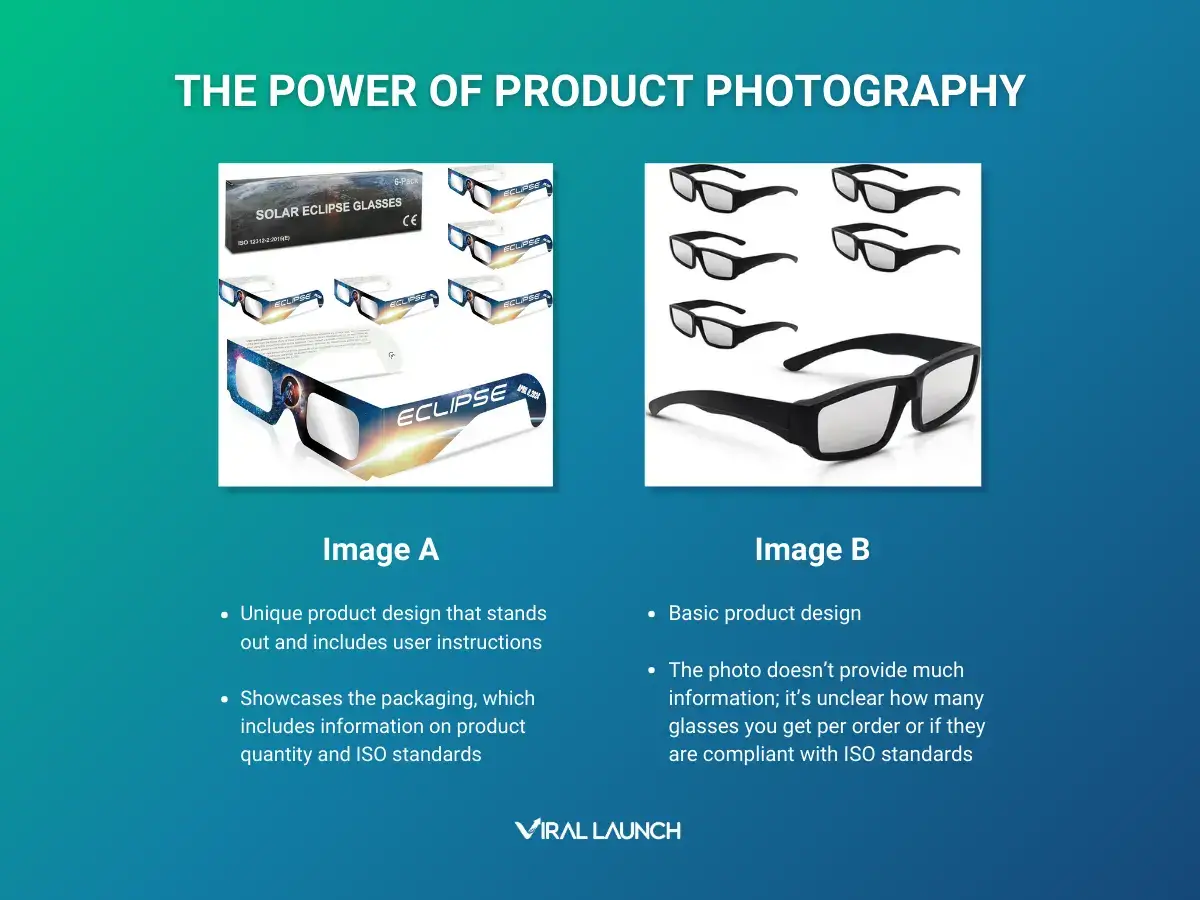
3 Tips to Reduce Amazon Selling Costs
Does it cost money to sell on Amazon? Yes. Are there ways you can lower those costs? Also yes. Here are our top three:
Optimize Your PPC Ads
You don’t want to be the seller with PPC ads that receive clicks but fail to convert. To avoid overspending, make sure to monitor your campaigns closely. A PPC management tool like Viral Launch’s AdSprout will prove helpful for providing you with automatic bid adjustments, actionable keyword insights, and more.
Stay on Top of Your Inventory
Keep those inventory management costs at bay by regularly tracking your inventory levels. This is especially important for those storing products at an Amazon fulfillment center.
Remember, you want enough units in stock to sell, but not so much that you owe Amazon long-term storage fees.
Cut Out the Unnecessary
Just because you can spend money on them, it doesn’t mean that you should or have to from the get go. This includes things like:
- Legal Fees: Setting up an LLC can be quite pricey for new sellers. We suggest revisiting this initiative down the line when your business is more established.
- Expensive Training: Guided courses from e-commerce experts can be a great way to master the basics of selling on Amazon. However, you don’t need to drop a few grand to learn. As we mentioned before, Viral Launch has a lot of free resources you can leverage.
- The Seller’s Edge Podcast
- 3 Steps To Finding Your Next Great Product E-Book
- How to Sell on Amazon in 8 Simple Steps: A Complete Guide
Final Thoughts
As the saying goes, there’s no such thing as a free lunch. You do have to pay to sell on Amazon. How much money, though, is for you to decide. It doesn’t need to be a crazy amount either—just enough to cover the seller fees and necessary expenses.
The bottom line? Careful planning and budgeting, coupled with the right tools, can help you get your business off the ground.
To keep it on the path of profitability, consider investing in Viral Launch. The platform hosts a suite of seller tools for discovering new product opportunities, conducting market research, optimizing listings, and automating PPC ad campaigns—all things designed to help you find success on Amazon.








